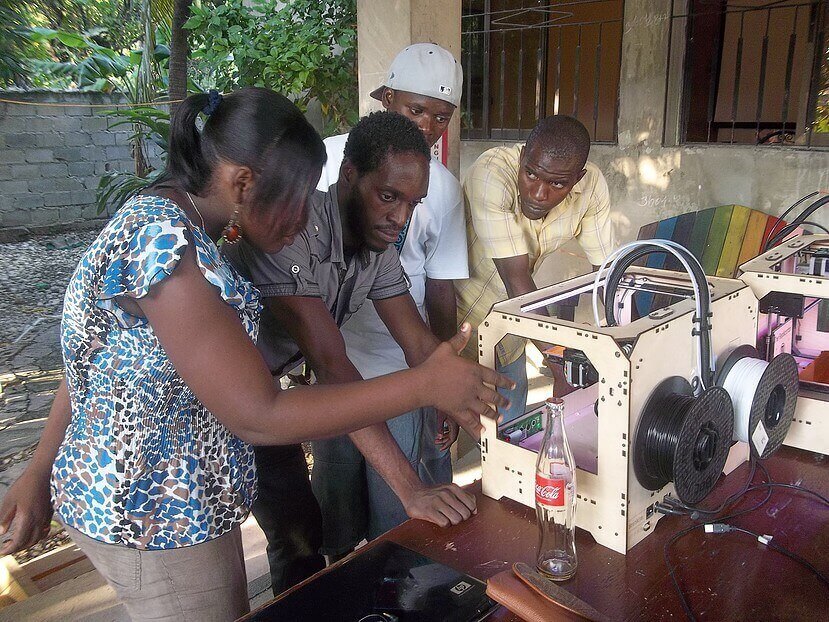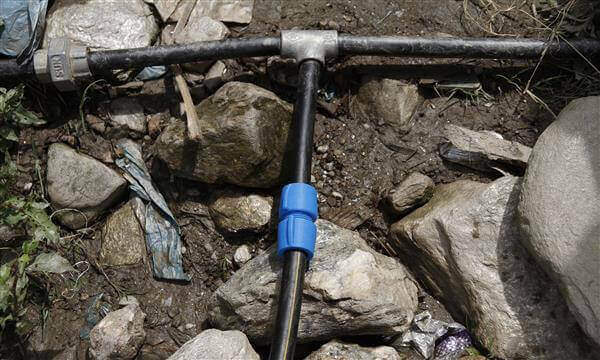Essential disaster relief recovery items: water, temporary shelters, and… a 3D printer?
All things considered, there is something decidedly low-tech about a natural disaster: earthquakes, floods, and other catastrophes remind us that while our virtual life may be omnipresent, it’s also precarious: an iPhone does precious little good with no electricity and cellular service.
On the other hand, technology provides critical innovations for managing supply distribution, providing services to survivors, and improving recovery materials.
Just imagine being able to use metal 3D printers to make spare parts for trucks and jeeps that often break down in the rocky terrain of recovery efforts. Or even one-time-use medical equipment for people injured in an earthquake zone. The potential applications for disaster relief are revolutionary.
An NGO called Field Ready is already pushing for the inclusion of new technologies in recovery efforts — and their latest campaign is to bring 3D printers along with water, shelter, and clothing to areas for internally displaced peoples.
Out of the Makerspace and into the Field
When you start to think about it, a 3D printer is a perfect fit for areas recovering from natural disasters. Field Ready reports about visiting villages in Nepal after the earthquake in April 2015, where they found houses that were badly damaged were still being inhabited, and broken objects still being used. For example, many water pipes were damaged and patched with temporary fixes like electrical tape and bicycle tubes.
The engineers knew exactly how to help: they used a satellite uplink to download open-source plans for pipe fittings, and printed more permanent replacements using 3D printers connected to the batteries of the rescue vehicles. Rather than having to wait for a specific part to be ordered and delivered from China, or contend with delivery routes blocked by fallen rocks, the rescue team could print small repair items and make fixes on the spot.
Andrew Lamb, Field Ready’s field engineer, explains in The Guardian:
“The hairs on the back of your neck stand up because you realise that you’re on to something here. Everybody standing around watching us – the water engineers, the local partner, the chap from Oxfam, the local social committee – were just watching, going, ‘This makes sense. This is what we need’.”
Hyper-local Manufacturing
It turns out 3D printing is a compelling solution to a lot of problems facing aid workers — from lack of infrastructure in the wake of a natural disaster, to a very long supply chain from object production to internally displaced person.
Field Ready has also partnered with a group called iLab//Haiti to 3D print one-time use medical equipment to treat the many injured in the aftermath of the Port au Prince earthquakes. In disaster-relief situations, inexpensive equipment becomes scare and therefore extremely valuable — a 10 cent umbilical clamp might cost a dollar. That’s because, Lamb explains, “Ninety percent of the cost is logistics and getting the clamp from China, where it is made, to the Caribbean.”
In effect, being able to rapidly produce items at the site of an emergency reduces costs for emergency organizations, and provides more services to more people.

Give a Man a 3D Printer…
When it comes to charity work, the “teach a man to fish” line is a honking great cliche. But Field Ready’s real goal is to get agencies to adopt these technologies themselves.
And to a certain extent, it’s working. There’s a trial project at Oxfam to use 3D printed versions to replace water taps from imported British sanitation supplies when they break. And there’s also a staff engineer pushing to use 3D printers in Lebanon to innovate more efficient taps that might encourage hand washing — a public health concern that’s very real.
But it’s not just moving this technology upstream to bigger organizations like the UN and Habitat for Humanity, it’s also about paying these skills forward to the next generation. While the Nepal and Haiti projects might be the most impressive things on the Field Ready projects site, one of the most touching is a project in Texas, where tens of thousands of unaccompanied refugee children have landed after fleeing poverty and crime in Central America.
In conjunction with other NGOs, Field Ready taught workshops using MakerBot Replicators. They focused not so much on how to use this specific technology, but instead on problem solving, building community, and a spirit of curiosity and fun among the students. Field Ready shows that technology’s role in humanitarian work doesn’t just need to help with emergency triage. It can also lay the groundwork for tomorrow.
License: The text of "3D Printing Can Help in Disaster Relief Efforts, Too" by All3DP is licensed under a Creative Commons Attribution 4.0 International License.
